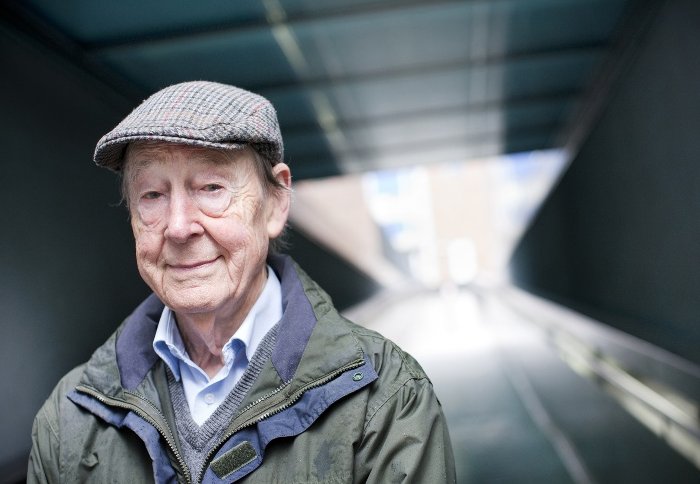
Emeritus Professor Tom Kibble CBE FRS

Imperial's Emeritus Professor Tom Kibble FRS writes his opinion about what to call the Higgs boson, if not the Higgs boson.
The recent discovery of the long-sought Higgs boson at CERN seems to have provoked a lot of discussion about what it ought to be called, with a variety of baroque alternatives suggested. In my view, this is misguided.
The name ‘Higgs boson’ has been in common use for forty years. It is silly to try to change it now, especially to such a long and clunky name as those recently suggested (see for example The Times, 22 April 2013).
If there was ever a right time to have this discussion, it was in the seventies. As a matter of fact, there was such a discussion, because my late colleague, the Nobel Prize winner Abdus Salam often referred to it as the ‘Higgs–Kibble boson’, a name I never liked and always discouraged. (The rationale for this was a paper I wrote in 1967 on the detailed application of the idea.)
There is an important distinction to be made between the Higgs boson and the underlying physical mechanism.
It is the boson that has attracted recent publicity, but initially this particle was an unimportant side issue. But the focus of attention at the time was the mechanism for giving masses to other particles, in particular the carriers of the ‘weak interaction’, the W and Z particles, eventually discovered at CERN in 1983.
The Higgs boson only became important once all the other pieces of the standard model of particle physics had been found, and this was the only remaining missing piece of the jigsaw.
For the mechanism, three independent groups contributed. All three published their ideas in Physical Review Letters in the summer and autumn of 1964. The first paper to appear was by François Englert and Robert Brout from Brussels, the second by Peter Higgs from Edinburgh, and the third by two American visitors, Gerald Guralnik and Carl Richard Hagen, and myself at Imperial College London.
The three approached the problem from very different perspectives, but all came to broadly the same conclusions. We at Imperial were unaware of the others until we were preparing our final draft. We then added references to them but concluded that we still had something very distinctive to say, especially about how the mechanism manages to overcome previously envisaged constraints.
Over the intervening years all three papers have generally been recognized and cited equally, for example by the trio awarded the 1979 Nobel Prize for the unified theory of weak and electromagnetic interactions in which the mechanism forms an integral part, Sheldon Glashow, Abdus Salam and Steven Weinberg.
There is arguably a plausible rationale, however, for the boson’s attribution to Peter Higgs. All of us were certainly aware that such a boson would exist, and that it would be massive, as anyone with a basic understanding of quantum field theory would have been, but Peter Higgs was undeniably the one who first pointed it out explicitly. Englert and Brout did not mention it all, no doubt thinking it too obvious, and although we did mention it we omitted to add the obvious comment that the theory would imply a non-zero mass.
So for the boson, as opposed to the mechanism, the name ‘Higgs boson’ has a degree of logic as well as the merit of brevity.
Read more
A more detailed account of the history can be found at
http://www.scholarpedia.org/article/Englert-Brout-Higgs-Guralnik-Hagen-Kibble_mechanism_(history)
Article text (excluding photos or graphics) available under an Attribution-NonCommercial-ShareAlike Creative Commons license.
Photos and graphics subject to third party copyright used with permission or © Imperial College London.
Reporter
Thomas Kibble
Department of Physics

Contact details
Email: press.office@imperial.ac.uk
Show all stories by this author
Leave a comment
Your comment may be published, displaying your name as you provide it, unless you request otherwise. Your contact details will never be published.



Comments
Comments are loading...